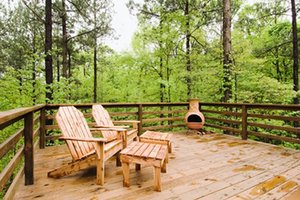Don’t neglect to budget time and money for opening and closing a vacation home before the season starts and after it ends.
A big reason for owning a vacation home is rest and relaxation, but it’s not all fun and games. Opening and closing a vacation home takes time and money. Plan to spend a day before the season starts to open your vacation home, and another day at season’s end to close it down.
Specific tasks, such as draining off pipes or turning on utilities, will depend on climate, as well as when and how the vacation home is used. A beach cottage has different requirements than a mountain cabin. If you don’t live nearby or don’t want to do the work yourself, be sure to budget for a property manager or local caretaker.
Opening a vacation home
When it’s time to visit your vacation home for the first time, or start renting it out for the season, you’ll need to get it ready. A ski chalet might require you to shovel snow and chop firewood, while a summer retreat by the shore might call for cleaning patio furniture and staining the deck.
Much depends on how well the house is maintained throughout the year. Opening your vacation home could be as easy as stocking the pantry, or if the house was neglected in the offseason, you could have multiple repairs on your hands.
A well-maintained vacation home shouldn’t take more than a day to get in shape for the season, assuming no major repairs are needed.
Here are some typical opening chores:
Turn on utilities
Clean and stock kitchen and bathrooms
Look for evidence of plumbing and roof leaks
Cut lawn and trim shrubs/trees
Clear walkways and driveway
Set up outdoor furniture
Change lightbulbs and smoke detector batteries
Replace furnace filters
Check for signs of pest infestation
Closing a vacation home
Closing a vacation home also takes about a day to complete. The emphasis should be on safeguarding your home against the elements as well as fire risks.
Here are some common closing tasks:
Turn off nonessential utilities
Secure all windows and doors
Turn on alarm system
Close storm shutters
Dispose of trash and perishable foods
Adjust furnace settings for climate
Bring in outdoor furniture
Unplug appliances and electronics
Drain water lines to prevent freezing (in cold climates)
Request mail-forwarding service
To deter vandalism and theft, consider installing a home security system. You can also put in automatic indoor lights that turn on at dusk or outside flood lights that are motion-activated.
If the house is only going to be vacant for a couple of months, call your utility providers to see if discounted “vacation rates” are available. It might be cheaper than turning off services and paying a reconnection fee a few weeks later.
Property manager vs. caretaker
It’s costly to hire a property management company to maintain your vacation home, including opening it and closing it. If you plan to rent out your vacation home, a property manager typically gets 20% to 60% of the rental income, according to Christine Karpinski of HomeAway, a vacation rental website.
A less expensive alternative is hiring a local housecleaner or handyman to open and close your vacation home, and keep an eye on the property during the offseason. A good rule of thumb for calculating cleaning fees is to budget $20 for each bedroom and bathroom, so a 3-bed/2-bath home would cost $100 to clean.
If you live far from your vacation home, you may have little choice but to hire local help. Ask owners of nearby vacation homes for referrals. Look for a property manager or caretaker with good references who has been in business locally for an extended period of time. And no matter who you end up hiring, be sure that anyone coming onto your property to do work is bonded and insured.
Houselogic.com May 4, 2010

No comments:
Post a Comment